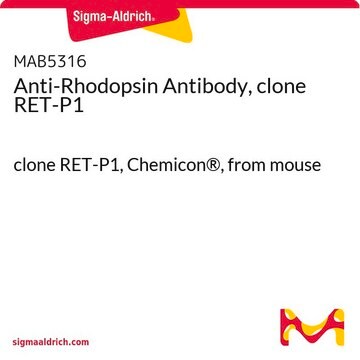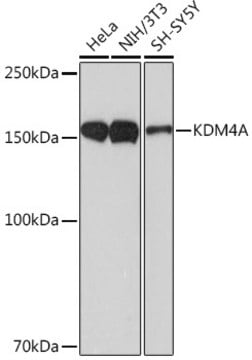MABN685
Anti-KDM4A Antibody, clone5H1
ascites fluid, clone 5H1, from mouse
Synonym(s):
Lysine-specific demethylase 4A, JmjC domain-containing histone demethylation protein 3A, Jumonji domain-containing protein 2A, KDM4A
About This Item
Recommended Products
biological source
mouse
Quality Level
antibody form
ascites fluid
antibody product type
primary antibodies
clone
5H1, monoclonal
species reactivity
human
technique(s)
immunofluorescence: suitable
immunohistochemistry: suitable
western blot: suitable
isotype
IgG1
UniProt accession no.
shipped in
wet ice
target post-translational modification
unmodified
Gene Information
human ... KDM4A(9682)
General description
Immunogen
Application
Immunofluorescence Analysis: A 1:200-1,000 dilution from a representative lot detected KDM4A in NTERA-2 cells.
Optimal working dilutions must be determined by end user.
Quality
Western Blotting Analysis: A 1:500-2,000 dilution of this antibody detected KDM4A-hIgGFc transfected HEK293 cell lysates.
Target description
Analysis Note
HEK293 and KDM4A-hIgGFc transfected HEK293 cell lysates
Not finding the right product?
Try our Product Selector Tool.
Storage Class Code
12 - Non Combustible Liquids
WGK
nwg
Flash Point(F)
Not applicable
Flash Point(C)
Not applicable
Certificates of Analysis (COA)
Search for Certificates of Analysis (COA) by entering the products Lot/Batch Number. Lot and Batch Numbers can be found on a product’s label following the words ‘Lot’ or ‘Batch’.
Already Own This Product?
Find documentation for the products that you have recently purchased in the Document Library.
Our team of scientists has experience in all areas of research including Life Science, Material Science, Chemical Synthesis, Chromatography, Analytical and many others.
Contact Technical Service







